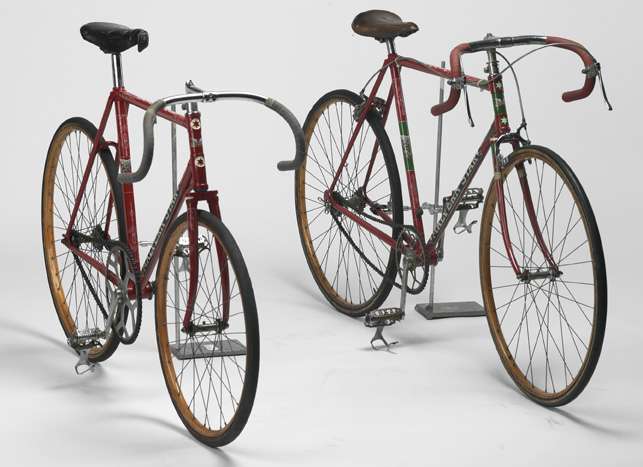Due to scheduled maintenance on Friday 19th April 2024 between 7:00PM and 9:00PM AEST, the Scootle website may face disruption in service. We apologise for any inconvenience caused.
 Hubert Opperman bicycles
Hubert Opperman bicycles
TLF ID R6375
These two racing bicycles were used by the champion Australian cyclist, Hubert Opperman, in the late 1920s and early 1930s. The one on the right with red handles is a classic road-racing bicycle. The one on the left with grey handles has been made for 'motor-pacing', a type of track racing. Both were manufactured by Bruce Small Pty Ltd in Melbourne under the 'Malvern Star' brand name.
